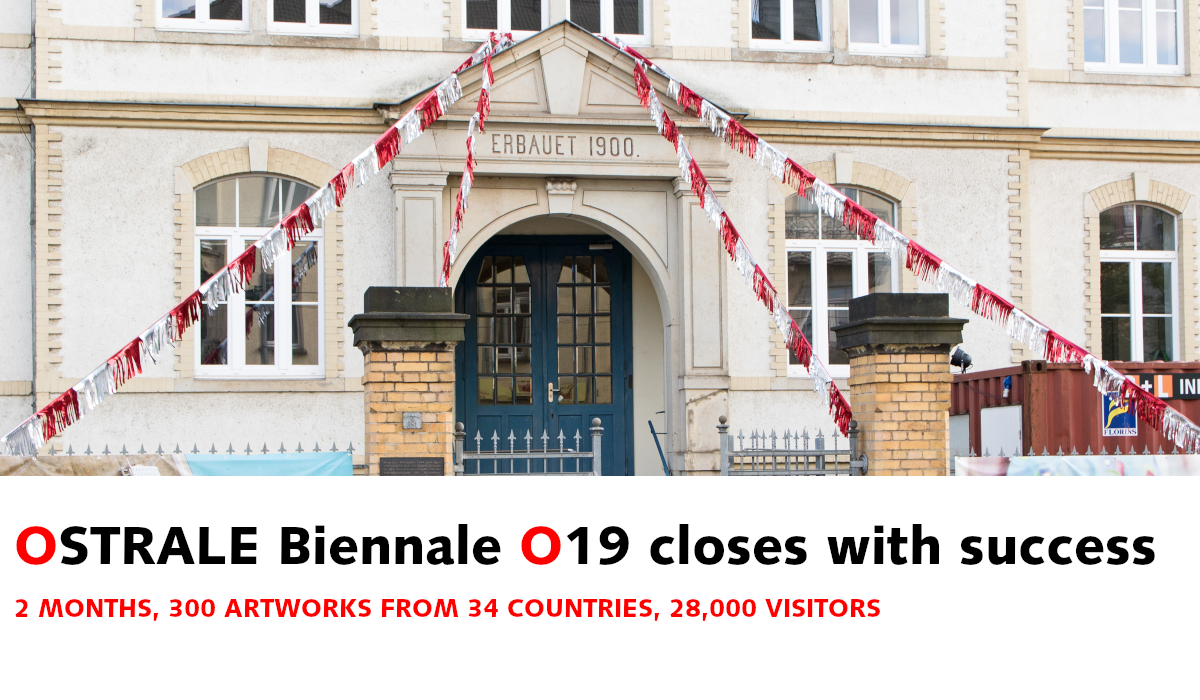
This year's OSTRALE Biennale, the international exhibition of contemporary arts in Dresden, closes its doors on Sunday evening after nine weeks. As a temporary solution, it took place this year at the historical cigarette factory f6 provided by a private real estate developer, and also in several other locations all over the city. Although this year it was eleven days less open than last year, and this time the entire summer holidays were during the exhibition period, this year's OSTRALE Biennale, with around 28,000 visitors, had almost as many as the last time (2017: around 30,000). Towards the end, up to 1,500 art lovers could be counted on some days despite the heat. In the only two weeks after the holidays, about 5,000 pupils (225 school classes) from all over Saxony came to visit the exhibition in frame of their art classes.
According to the organizers, the Dresdeners and their guests have once again very well accepted the exhibition and its extensions through symposia, workshops and the Artist in Residence programme. The same applies to the satellite exhibitions scattered throughout the city, such as the Ausländerat, the former Bautzner Straße prison and the Goethe-Institut Dresden. In this Biennale year, a total of over 300 works by 180 artists from over 34 nations were on show. Once again, their spectrum covered all genres of contemporary art.
As the OSTRALE - Centre for Contemporary Art will have a new base and a new but smaller event venue from 1 October 2019, the OSTRALE Biennale is already looking for a new building in Dresden for the next Biennale year of 2021. During the interim year of 2020, artworks and artists from the 2019 Biennale are making guest appearances in three foreign cities on two continents, namely in Kampala (Uganda), Nairobi (Kenya) and Rijeka (Croatia), the European Capital of Culture in 2020.
